Walking through Rhodes Old Town feels like stepping into a living history book. As I wandered the cobblestone streets last summer, medieval walls towered around me while the Mediterranean sun cast golden light on ancient stone.
Rhodes offers one of Europe’s best-preserved medieval cities, where knights once walked the same paths tourists explore today.
The Street of Knights captivated me with its perfectly preserved medieval architecture, each stone telling stories of the past. I spent hours exploring the Palace of the Grand Master, amazed by how this UNESCO World Heritage site balances its historical significance with the energy of modern visitors.
The contrast between ancient walls and lively cafés creates an atmosphere unlike anywhere else I’ve traveled.
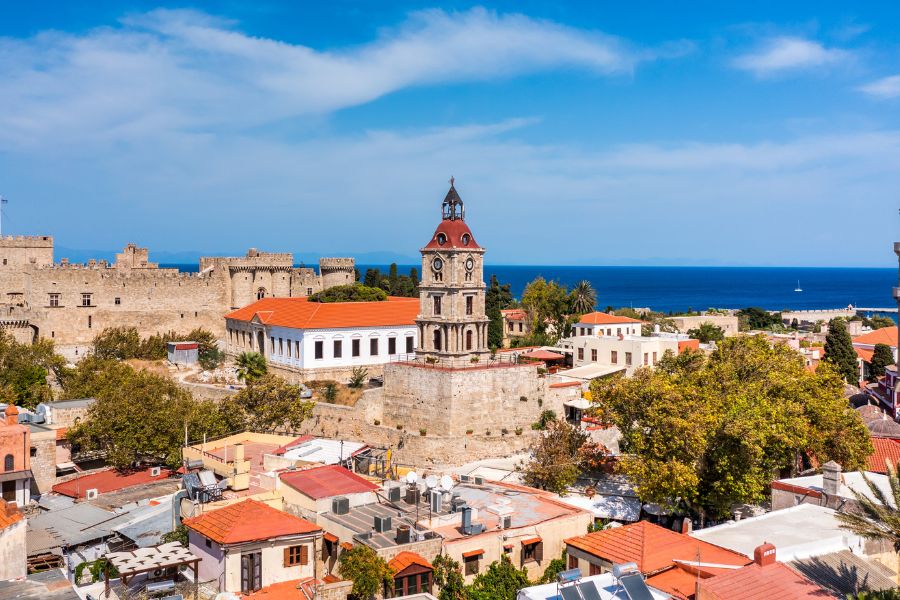
Beyond the Old Town, Rhodes revealed even more historical treasures. Day trips to the Acropolis of Lindos and medieval castles at Kritinia and Monolithos connected me with different chapters of the island’s rich past.
Whether you’re a history enthusiast or simply enjoy beautiful surroundings, Rhodes weaves its ancient stories into an unforgettable travel experience that I can’t wait to share with you.
The Medieval City of Rhodes: A Journey Back in Time
Walking through Rhodes’ medieval city feels like stepping through a time portal. The UNESCO World Heritage site showcases extraordinary preservation with its impressive stone walls stretching over 4 kilometers around the old town.
Exploring the Street of the Knights
The Street of the Knights was my absolute favorite part of exploring medieval Rhodes. This perfectly preserved cobblestone street runs straight through the heart of the old town.
Dating back to the 14th century, it once housed knights from different European regions, each section marked by unique architectural details.
I spent hours admiring the Gothic doorways and intricate stone carvings that still appear remarkably intact after centuries. The Hospitallers (Knights of St. John) created this stunning thoroughfare as their main administrative center.

What struck me most was how the street maintains its medieval character despite the crowds. Walking here early morning, I could almost imagine armored knights striding past the stone facades on their way to important meetings.
Discovering the Palace of the Grand Master
The Palace of the Grand Master stands as the crown jewel of medieval Rhodes. This massive fortress dominates the highest point of the old town, with its imposing stone towers visible from almost anywhere within the walls.
Originally built in the 14th century by the Knights of St. John, the palace served as both administrative headquarters and defensive stronghold. Though partially reconstructed in the 1930s, it retains authentic medieval elements that took my breath away.
Inside, I wandered through over 20 rooms furnished with medieval artifacts and spectacular mosaic floors. The blend of Byzantine, Gothic, and Ottoman influences in the architecture reflects Rhodes’ complex history.
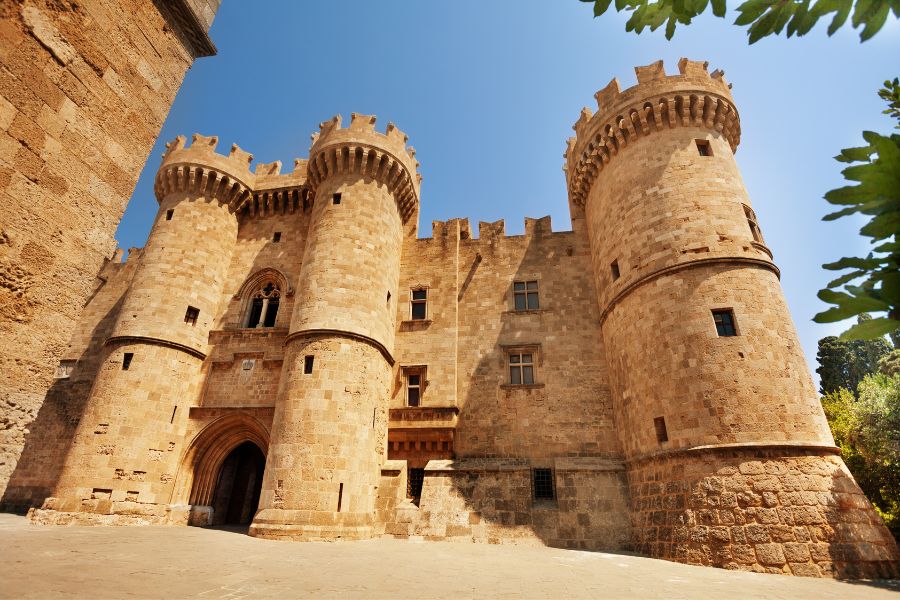
My favorite spot was the inner courtyard, where I sat quietly imagining the knights gathering for ceremonies centuries ago. The massive stone walls provided welcome shade from the Mediterranean sun as I explored this remarkable testament to medieval ingenuity.
Rhodes’ Ancient Greek Legacy
Beyond medieval walls and Crusader fortresses, Rhodes holds a rich heritage from ancient Greece. The island was once a powerful city-state with impressive monuments and artistic achievements that continue to fascinate visitors today.
The Mythical Colossus of Rhodes
Walking through Rhodes, I’m constantly reminded that I’m treading the same ground where one of the Seven Wonders of the Ancient World once stood. The Colossus of Rhodes was a massive bronze statue of the sun god Helios that guarded the harbor entrance around 280 BCE.
Standing approximately 108 feet tall (similar to the Statue of Liberty), this engineering marvel represented Rhodes’ golden age after defeating invaders. Though it collapsed during an earthquake after just 56 years, its legacy lives on.

The exact location remains debated among historians, but most believe it stood near Mandraki Harbor. I love watching visitors’ faces as they try to imagine this colossal figure straddling the harbor entrance – though this popular image is likely just a myth.
Archaeological Museum of Rhodes Insights
Housed in the medieval Hospital of the Knights, the Archaeological Museum offers my favorite glimpse into Rhodes’ ancient Greek past. The collection spans from the Mycenaean to the Roman periods.
The star attraction is the “Aphrodite of Rhodes,” a stunning marble statue showing the goddess in a graceful pose. I could spend hours admiring the detailed craftsmanship that’s survived for thousands of years.
What fascinates me most are the everyday items – pottery, jewelry, and coins – that tell stories about ordinary ancient Greek life on the island. The collection of funerary artifacts provides insights into burial customs and beliefs about the afterlife.
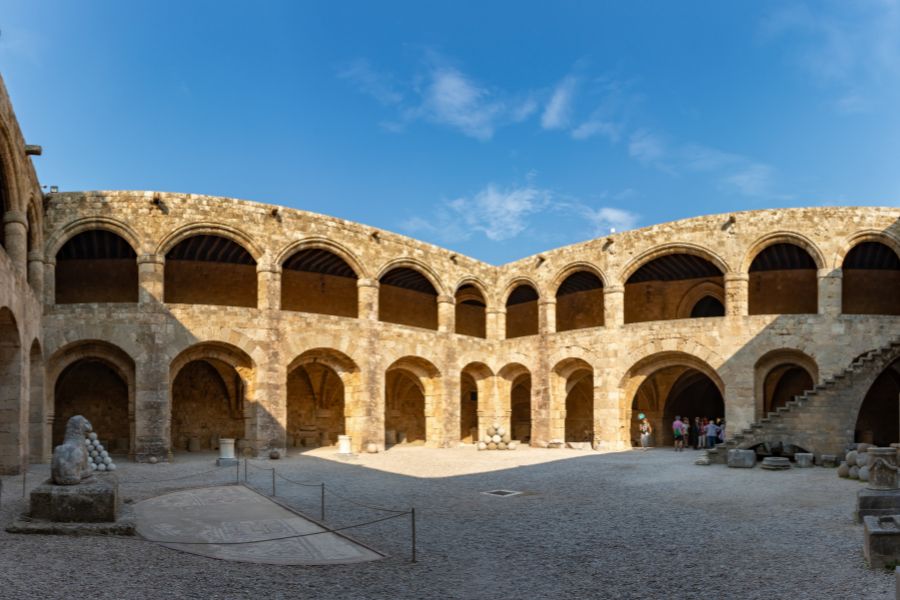
Don’t miss the beautiful mosaic floors recovered from ancient villas across the island. I recommend visiting early morning to avoid crowds and truly appreciate these ancient treasures.
The Old Town: A Tapestry of Cultures
The Old Town of Rhodes is a UNESCO World Heritage site where history comes alive at every turn. Walking through its narrow cobbled streets, I found myself surrounded by 2.4 miles of impressive medieval walls that protect a stunning blend of cultural influences spanning centuries.
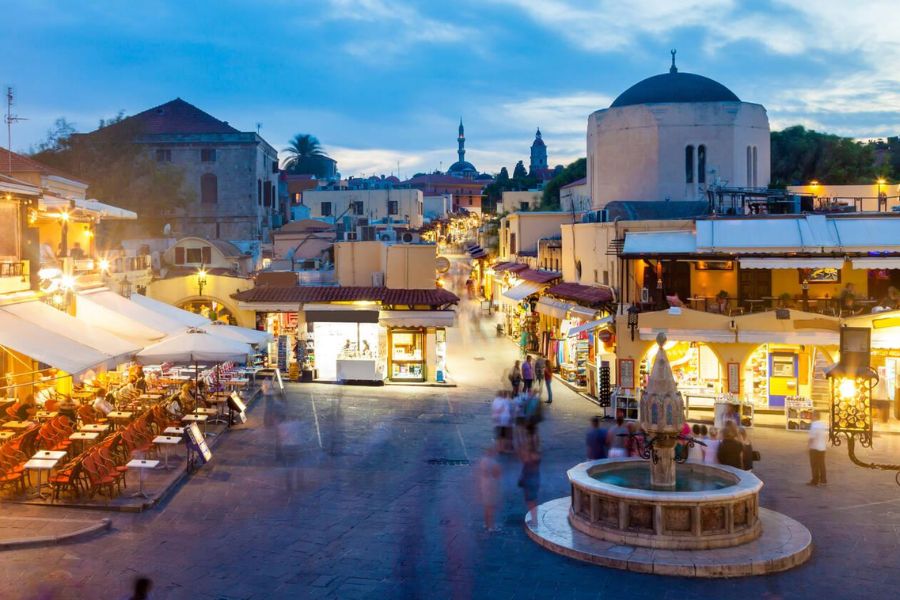
Ottoman Influences and Mustafa Mosque
The Ottoman heritage is clearly visible throughout the Old Town. During my morning walks, I discovered beautiful fountains with Arabic inscriptions and distinctive architectural details from this important period in Rhodes’ history.
Mustafa Mosque stands as one of the most striking examples of Ottoman influence. Its elegant minaret rises above the surrounding buildings, creating a perfect photo opportunity. The mosque dates back to the 16th century when the Ottomans controlled the island.
What surprised me most was how seamlessly the Ottoman elements blend with the town’s earlier Byzantine and Knights’ era structures. This cultural layering gives the Old Town its unique character that you won’t find anywhere else in Greece.
The Charm of Hippocrates Square and Socrates Street
Hippocrates Square quickly became my favorite spot to relax after exploring. This lively hub is ringed with cafés where I enjoyed watching locals and tourists mingle while sipping strong Greek coffee.
The square serves as a natural meeting point and hosts occasional cultural events. From here, you can easily find Socrates Street, the main shopping artery that cuts through the Old Town.
Socrates Street offers everything from local crafts to designer boutiques. I spent hours browsing its shops, finding unique souvenirs like handmade ceramics and local honey. The friendly shopkeepers often share fascinating stories about the Old Town if you take time to chat.
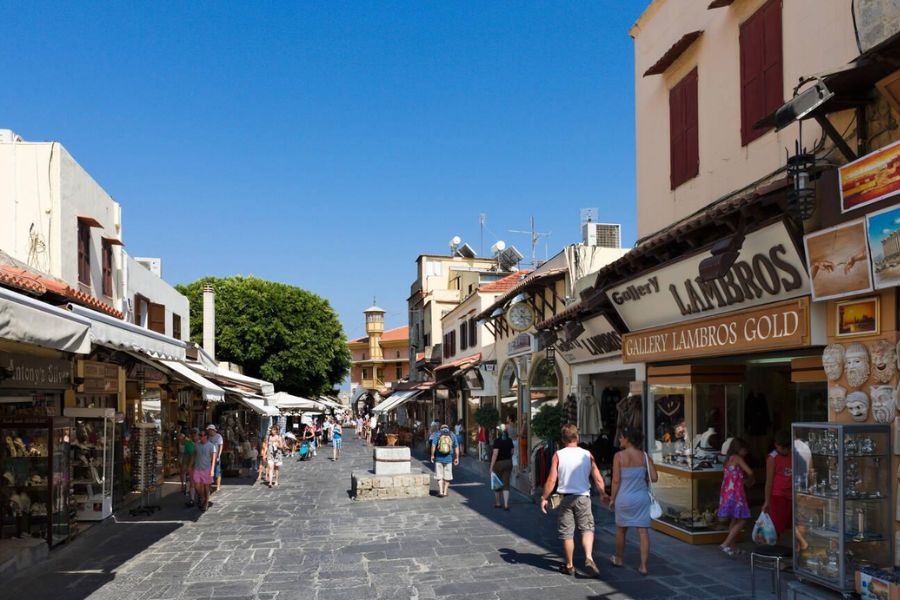
Don’t miss the small side alleys branching off from Socrates Street. These quieter pathways hold hidden gems like family-run tavernas serving authentic Rhodian cuisine.
A Blend of Sea and History
Rhodes offers a unique experience where the deep blue Aegean waters meet centuries of fascinating history. The island’s coastal areas perfectly showcase this blend, creating unforgettable moments for travelers seeking both relaxation and cultural exploration.
Marine Gate and Mandraki Harbor
Walking through the impressive Marine Gate feels like stepping back in time. This massive stone entrance to the medieval city once served as the main access point for ships entering Rhodes. I loved how the sunlight cast shadows across the ancient stonework, highlighting details from centuries past.
Mandraki Harbor, just steps away, buzzes with energy and charm. Small fishing boats bob alongside luxury yachts while cafés line the waterfront. The harbor’s most famous feature? The spot where the legendary Colossus of Rhodes supposedly stood.
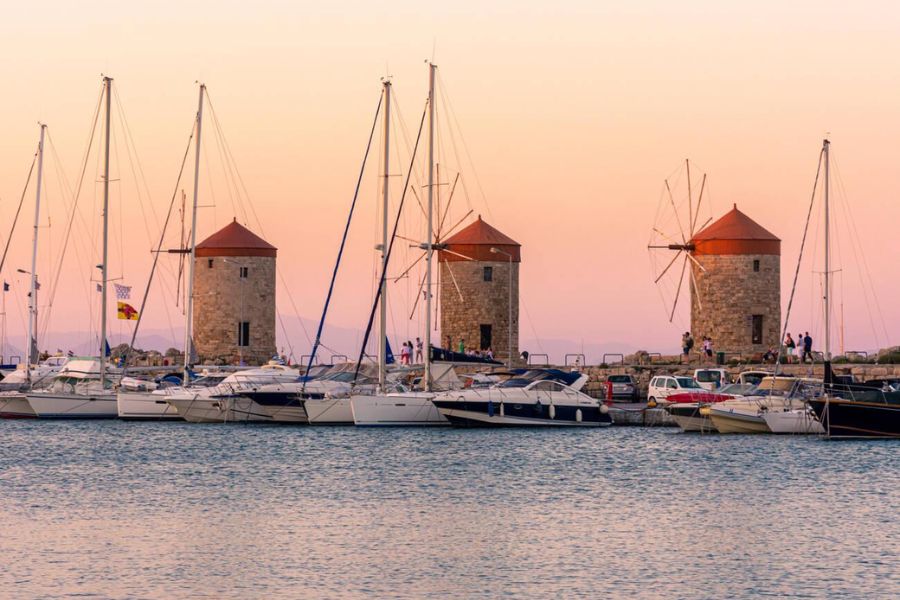
I recommend visiting early morning when local fishermen return with their catch. The harbor’s blend of history and everyday Greek life creates a perfect spot for people-watching while enjoying a coffee flavored with local olive oil biscuits.
The Aegean Experience: Swimming and Sightseeing
The crystal-clear Aegean Sea surrounding Rhodes offers the perfect refreshment after exploring historical sites. My favorite swimming spot is Elli Beach, just a short walk from the medieval city, where the Mediterranean sunshine warms the water to perfection.
For an unforgettable experience, try a coastal boat tour. These trips provide stunning views of Rhodes’ medieval walls from the water – a perspective few visitors get to appreciate. The contrast between ancient stone fortifications and the brilliant blue sea creates perfect photo opportunities.
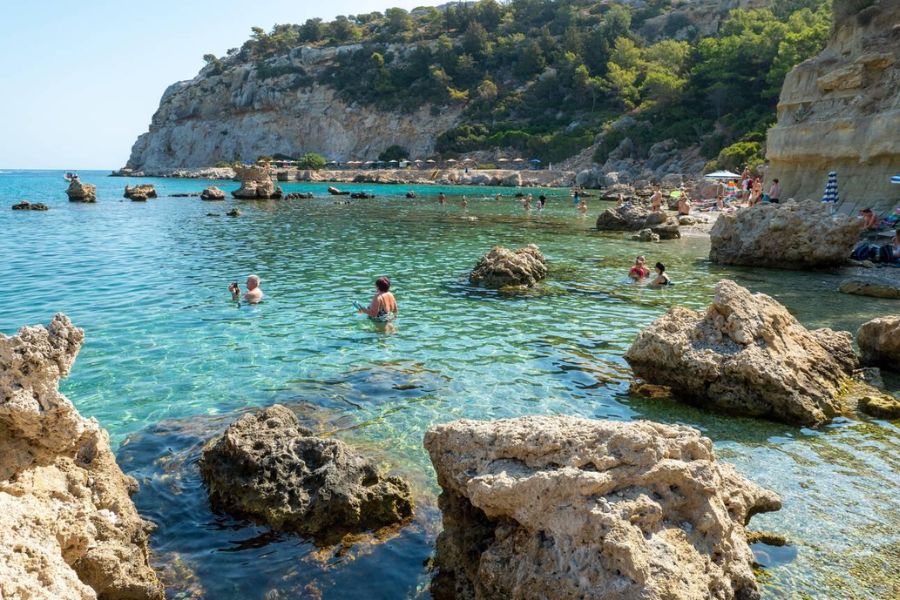
Between swims, I enjoyed fresh Greek salads topped with local olive oil at beachside tavernas. The combination of salty sea air, historical views, and Mediterranean flavors created perfect midday breaks during my exploration of the island.
Adventures Beyond the City: Excursions in Rhodes
While Rhodes Town offers incredible historical treasures, the island holds even more wonders beyond its ancient walls. Day trips reveal stunning archaeological sites and breathtaking seascapes that shouldn’t be missed during your visit.
The Hilltop Acropolis of Lindos
My journey to Lindos was absolutely worth the scenic drive along Rhodes’ eastern coastline. I recommend stopping at Lindos Panorama viewpoint first – the sight of white-washed buildings clustered beneath the ancient acropolis is unforgettable!
The climb to the acropolis is moderately challenging but rewarding. I chose to walk, though donkey rides are available for those who prefer them.
At the top, I was amazed by the Temple of Athena Lindia dating back to 300 BCE. The views of St. Paul’s Bay below are simply spectacular – bring your camera!
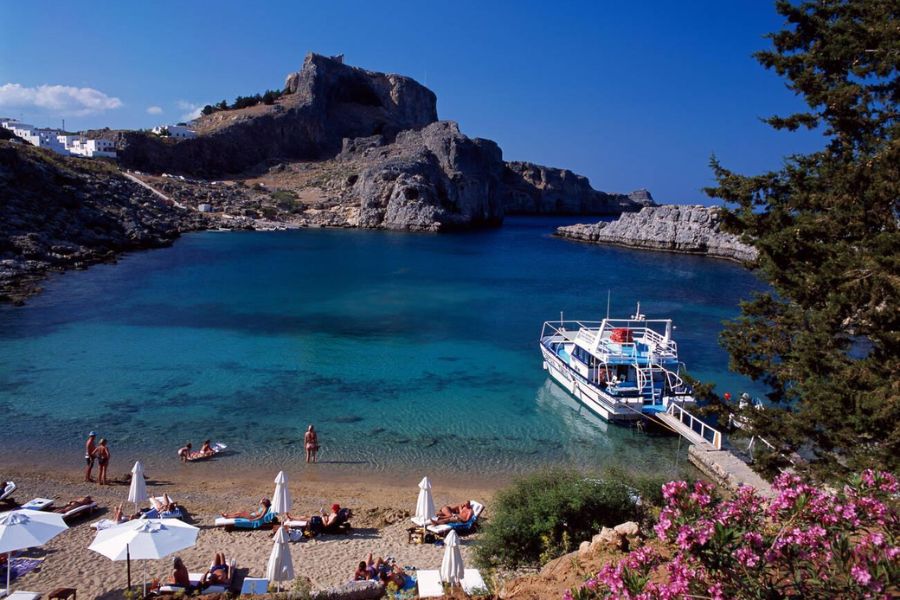
The village itself deserves exploration too. I wandered through narrow cobblestone streets lined with cafés and shops selling local crafts. Many guided tours offer historical context that enhanced my understanding of this archaeological treasure.
Cruising to Nearby Islands
Taking a day cruise from Rhodes harbor was one of my favorite experiences. Several operators offer trips to neighboring islands like Symi. Symi is known for its colorful neoclassical houses and sponge diving history.
I chose a full-day excursion that included:
- Swimming stops in crystal blue coves
- A fresh seafood lunch onboard
- Guided commentary about the region’s history
The waters surrounding Rhodes were once vital shipping lanes. They connected Constantinople (now Istanbul) to the Mediterranean world. Our captain shared fascinating stories about ancient trade routes while we sailed.
Some cruises also visit the island of Chalki. Chalki feels wonderfully untouched by mass tourism. I spent a blissful afternoon there wandering the harbor front and sampling local delicacies.

